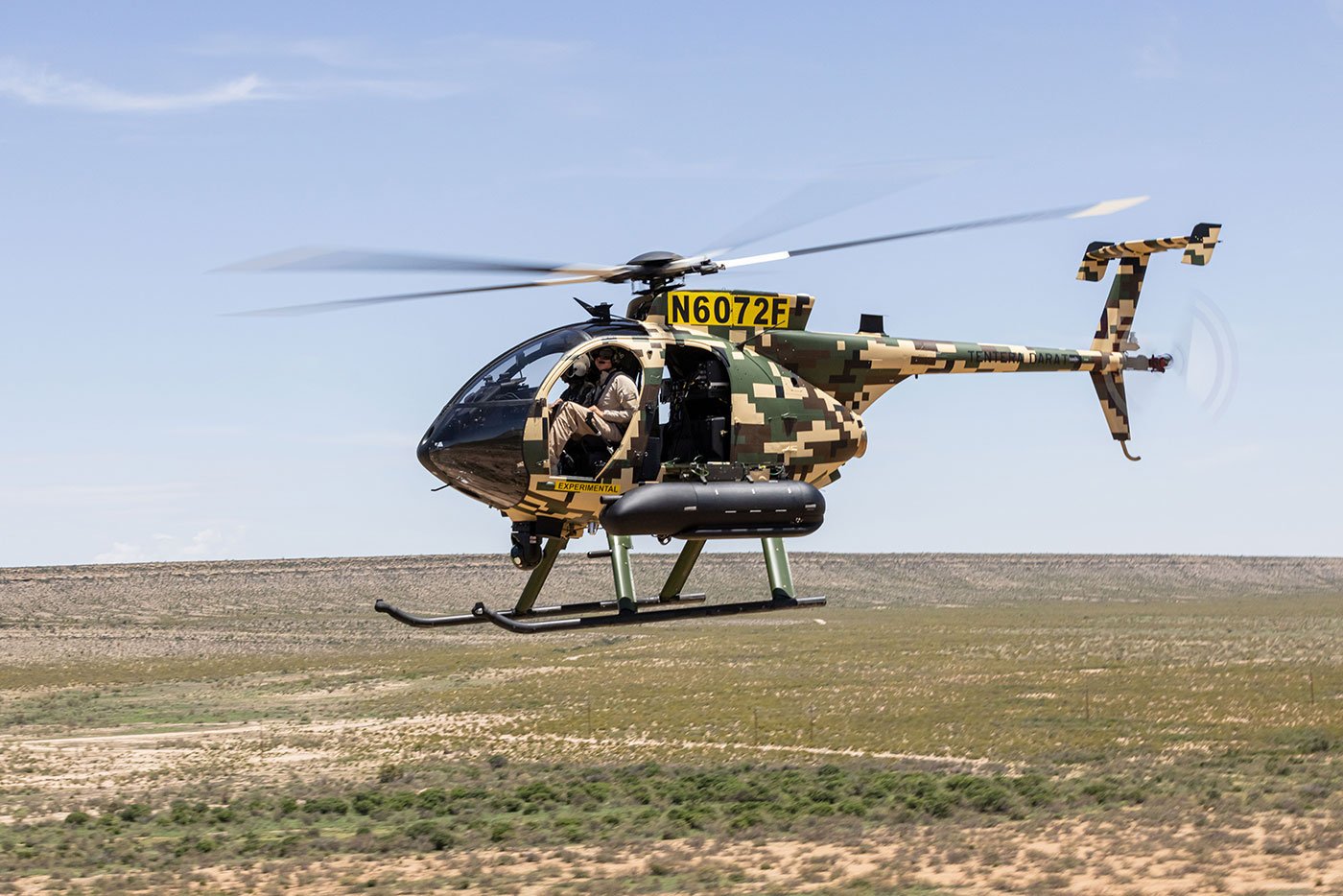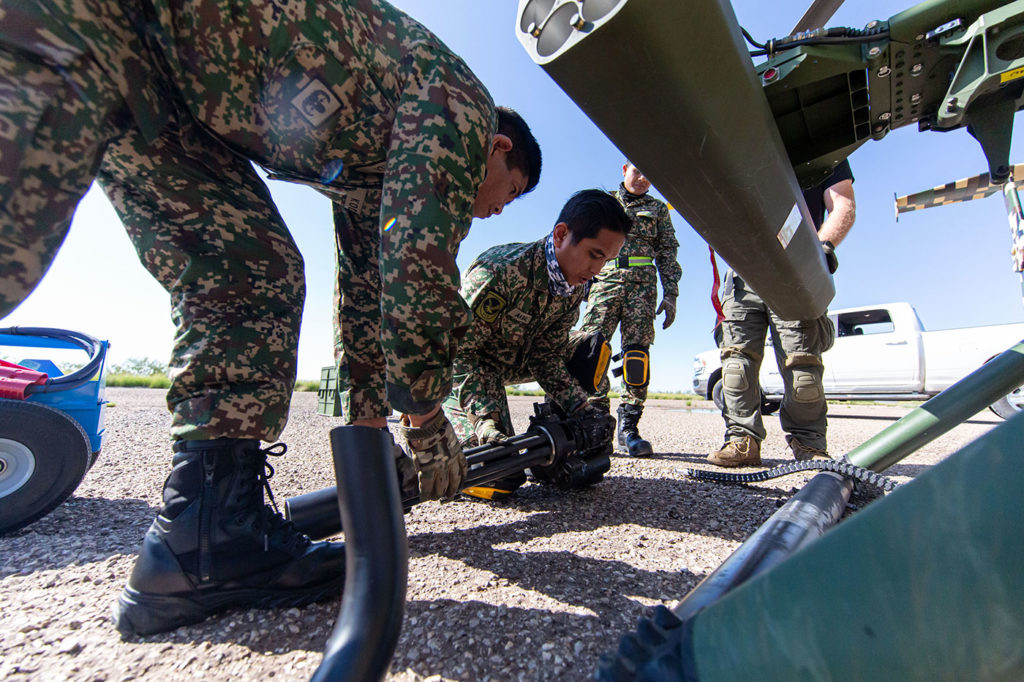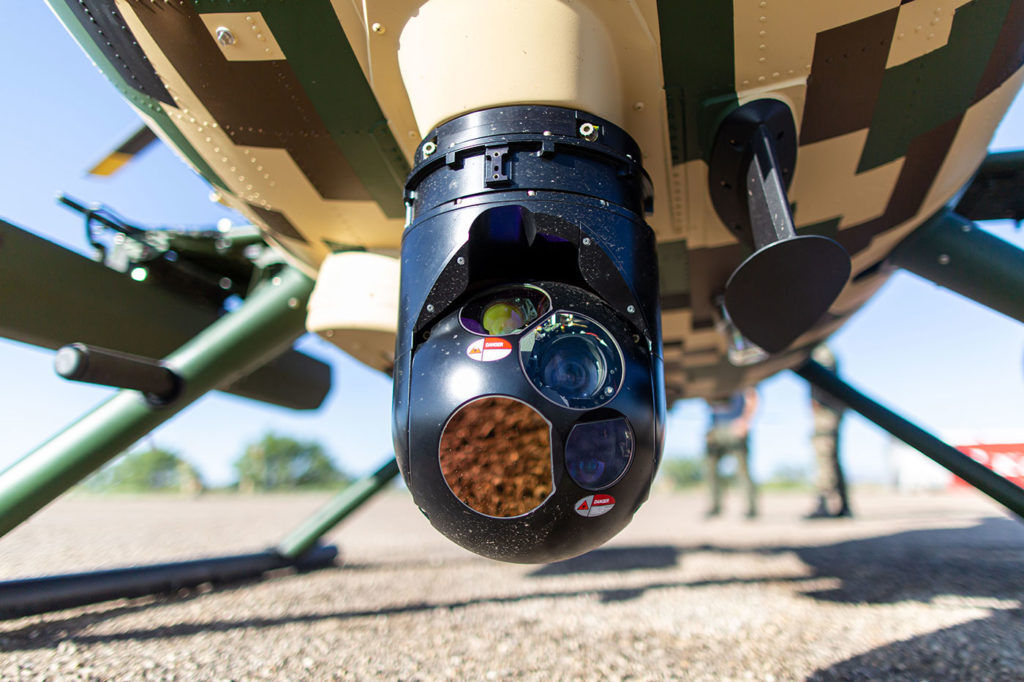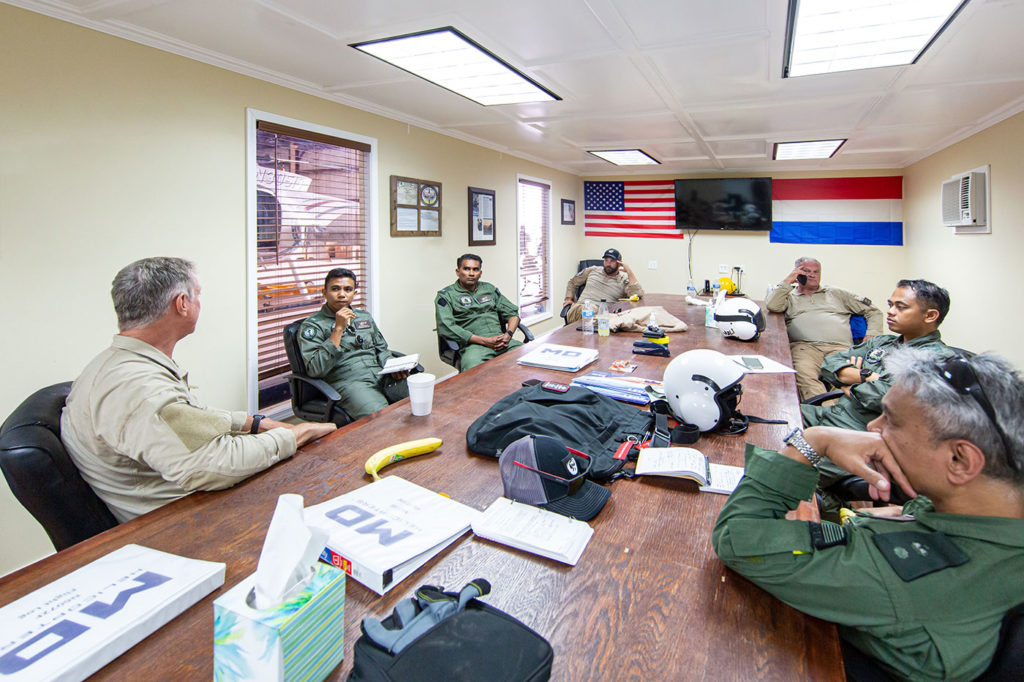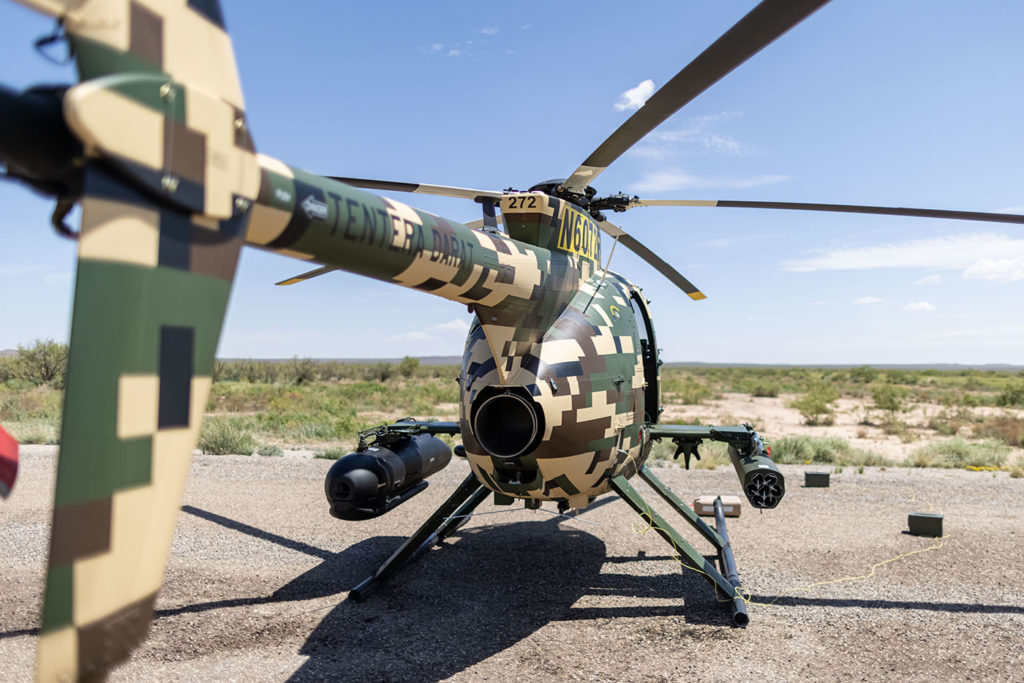Photos by Billy Hardiman
Screaming across the sandy desert at 100 miles per hour, 25 feet above the ground, the gray-green scrub brush in West Texas becomes streaks against the craggy desert.
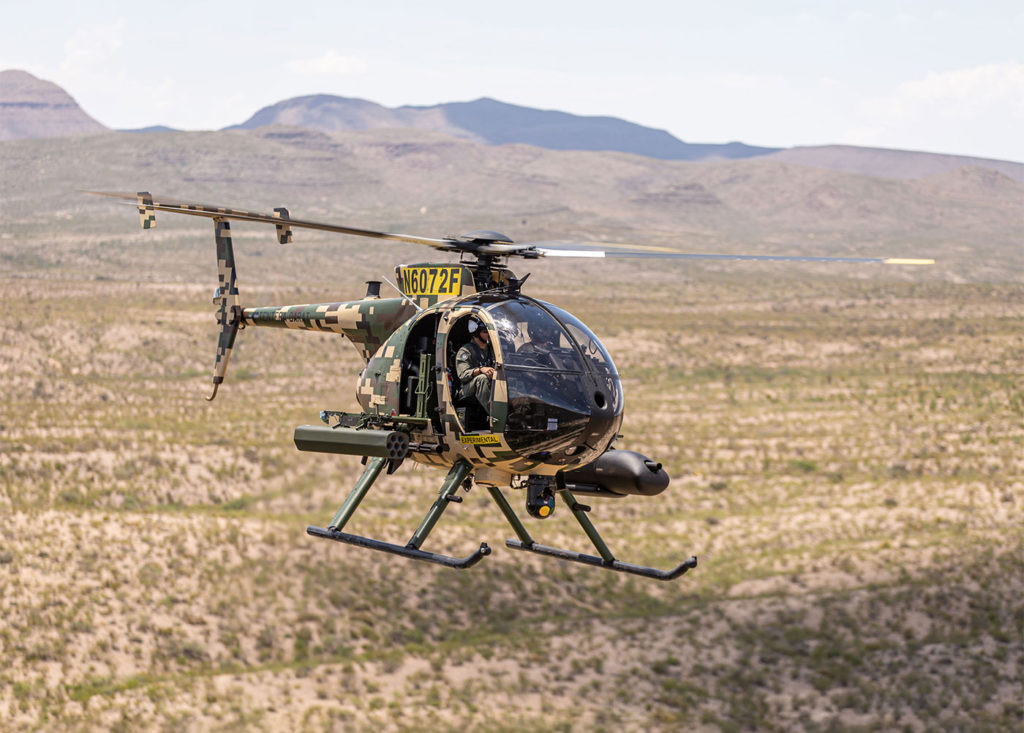
“Approaching like this, the enemy can’t see us and should have a difficult time even knowing which direction we’re coming in from, until we’re right on top of them,” MD Helicopters lead military pilot Dennis Banks said on one such gun run on a baking-hot July afternoon.
In this 2,600-acre expanse, there is little else to see as the MD 530G speeds toward its simulated enemy, a couple trucks and Conex boxes splayed atop a hill to serve as targets. Banks, a former U.S. Special Operations Forces pilot, skillfully flies nap-of-the-earth, hidden from the target area by a small crest ahead.
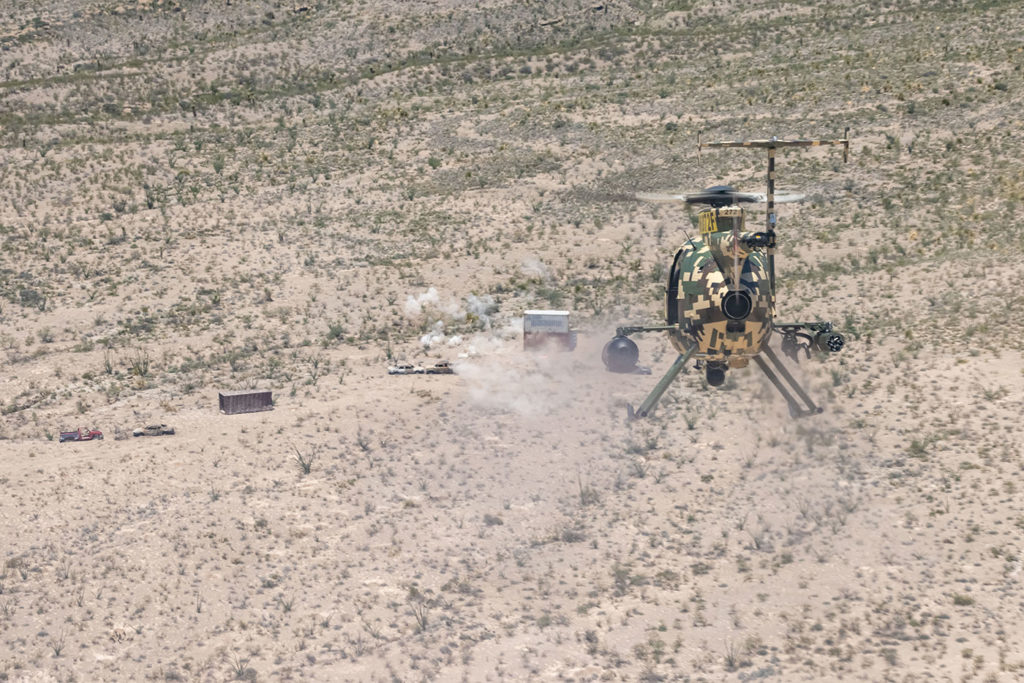
Banks slows the aircraft and pulls into a sharp ascent to about 300 feet, then angles the nose — and the helicopter’s side-mounted machine guns — downward. Staring through a smudge of Sharpie drawn onto the windshield, Banks pulls the trigger, loosing hails of bullets from both guns, and walks the tracers across one of the trucks and a shipping container before rolling up and out of the target zone. It takes mere seconds for several hundred rounds to leave the side-mounted cannons and converge on the target. (An untrained Valor editor held the trigger a little too long, but was less wasteful of very expensive ammunition on the second pass, Banks assured him.)
It is a basic combat approach, bump, fire and exit maneuver used by gunship pilots to support troops in contact with enemies on the ground. The mission profile is the same one a class of Malaysian pilots, commanders, maintainers and armorers will practice over the coming week, culminating in coordinated multi-ship rocket attacks on this and other targets scattered through the desert.
“They train in their own aircraft, that way… by the time they roll in, they’re already used to them.”
“Almost everything is run-in close — low-level — bump up, acquire and then shoot and roll out,” Banks said.
The helicopters and the maneuvers these men will learn in the Texas desert will be put to use in the Malaysian state of Sabah, where piracy and general lawlessness reportedly has spilled across the sea from the Philippines and elsewhere.
The aircraft
Malaysia in 2016 bought six MD 530G helicopters through a direct commercial sale from MD Helicopters worth about $76 million. Both the 530F and G have become popular fast attack helicopters for U.S. allies. MD holds a $1.4 billion indefinite delivery, indefinite quantity (IDIQ) contract that allows it to sell up to 150 MD 530F helicopters through the U.S. foreign military sales process, as well.
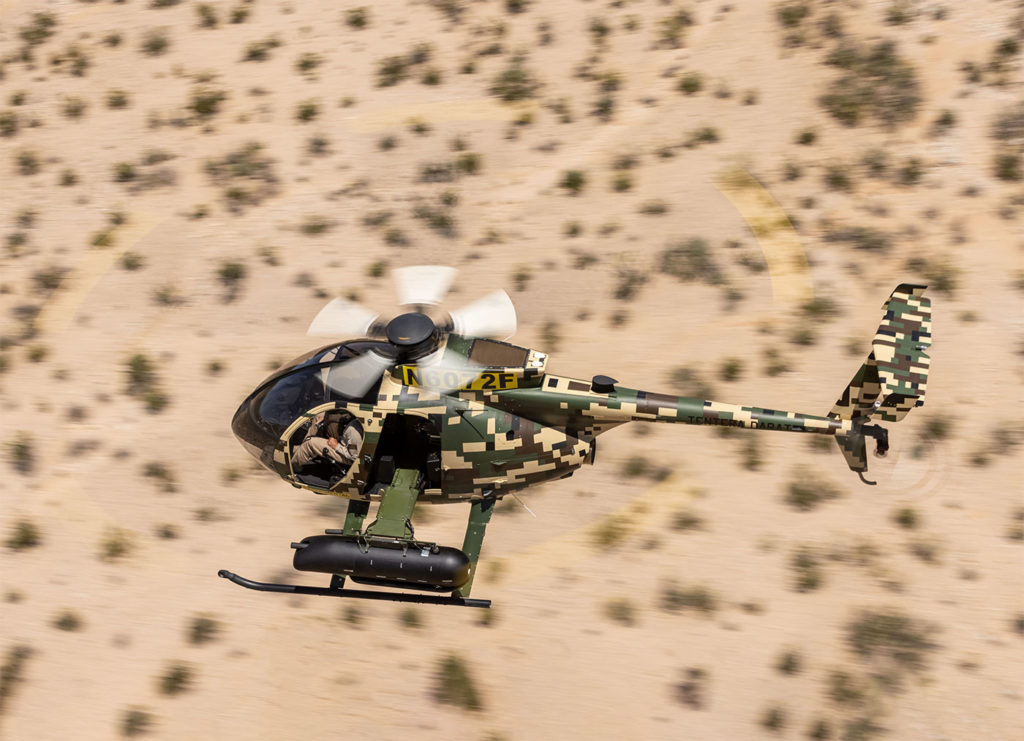
Flying in the Texas desert, the aircraft carry an experimental rating, because, as Banks explained, “We’re flying it heavier and using more power, the torque limits are higher because of the additional gross weight.”
Lebanon also chose the newer G-model aircraft and sent pilots to train with MD at the manufacturer’s headquarters in Mesa, Arizona and in Texas. The single-engine MD 530G can be customized by each nation and MD tailors training to their specific missions.
Promoted as a bespoke scout attack helicopter, the 530G sports an all-digital cockpit with two Genesys Aerosystems IDU-680 LCD primary displays, Tek Fusion Global’s Pathfinder mission management system (MMS) and “ARES” weapons management system (WMS) on dual side-mounted mission displays. The helicopters come with the Dillon Aero Mission Configurable Armament System (MCAS), 62-milimeter ballistic armor protection and a ballistically tolerant crashworthy fuel system.
Armament options include the FN Herstal HMP 400 .50-caliber machine gun pods, M260 seven-shot rocket pods and 70-mm advanced precision kill weapon system (APKWS) rockets, said military pilot Aaron May. Pilots aim and gain situational awareness with the Wescam MX-10D electro-optical/infrared laser designator and Thales’ Scorpion helmet-mounted cueing system.
Lebanon’s helicopters also feature the Harris Falcon III RF-7850A-MR Multi-channel Airborne Networking Radios with advanced encryption standards.
At the heart of MD’s IDIQ contract was the fleet of 60 MD 530F attack helicopters the U.S. government bought for the Afghan Air Force. The remainder of the authorized 150 MD 530F Cayuse Warrior and/or MD 530G helicopters are up for grabs to U.S. allies deemed worthy through the foreign military sales process.
MD had delivered 50 as of July and more were on the way from the factory when the Taliban overran the country following the U.S. and allied troop withdrawal. Still, the contract remains in effect, allowing allied nations to benefit from a reduced per-aircraft price.

Kenya bought six MD 530F Cayuse Warriors helicopters through the contract, which could be worth a total $1.4 billion over the next five years. Powered by the Rolls-Royce 250-C30 650-shaft horsepower turbine engine, the aircraft will feature an advanced, all-digital glass cockpit, ballistically tolerant crashworthy fuel system, Harris RF-7850A tactical radio, Rockwell Collins HF-9000D, and the full complement of mission equipment that is standard to the Cayuse Warrior.
The helicopters for each nation are built at the MD Helicopters facility in Mesa and then shipped to Texas when the student pilots have graduated from classroom to live-fire training, Banks said.
It’s a popular process for smaller air forces aligned with the U.S. war on terror and other international missions. The Lebanese Air Force successfully completed the first of three training classes at the flight training academy in March.
The range
The huge swath of West Texas desert is privately owned and leased by MD from the landowner so there is no U.S. military presence or oversight, Banks explained.
A civilian holder of a federal firearms license is on hand to legitimize the purchase of ammunition.
Three MD 530G helicopters in Malaysia’s preferred digital green-and-tan camouflage line up on the tarmac. A large hangar nearby holds a conference room for pre- and post-flight briefings and a staging area for armaments and ammunition.
Visitors are warned to avoid taller tufts of grass and brush because rattlesnakes are fairly common here. Scorpions abound. The area is so remote and near the U.S. southern border that a safety aircraft — in this case an older MD 530C — overflies the target area before the students begin their gun runs.
“We have to come out here and make sure there aren’t any immigrants hiding around the targets,” said Aaron May, one of the former military pilots providing training to the Malaysian students. “They try to cross the border and get way out here and it gets really hot and sometimes they will sleep or take shelter in the boxes.”

The safety aircraft will take up station a short distance from the target area where a prepared gravel landing pad has been installed. The student pilots and their instructors fly in from left to right in front of this staging area. Their tracer rounds are clearly visible reaching from the helicopters to the targets seconds before the grinding moan of the rounds is heard. An emergency trauma nurse also is on hand in case anything goes wrong.
The training
Typically four pilots, about eight mechanics and up to four armament personnel from each nation attend the training camp, which begins in Mesa and culminates with gunnery exercises in Texas. MD can accommodate as many classes as each nation needs — Kenya sent three classes of pilots and maintainers — of six to seven weeks long.
“After the build is complete in Mesa, then we bring the customer. Part of that is by design,” Banks added. “They train in their own aircraft, that way these guys will already have 30 hours in their aircraft. Kenya, they had close to 50 hours in them. By the time they roll in, they’re already used to them.”
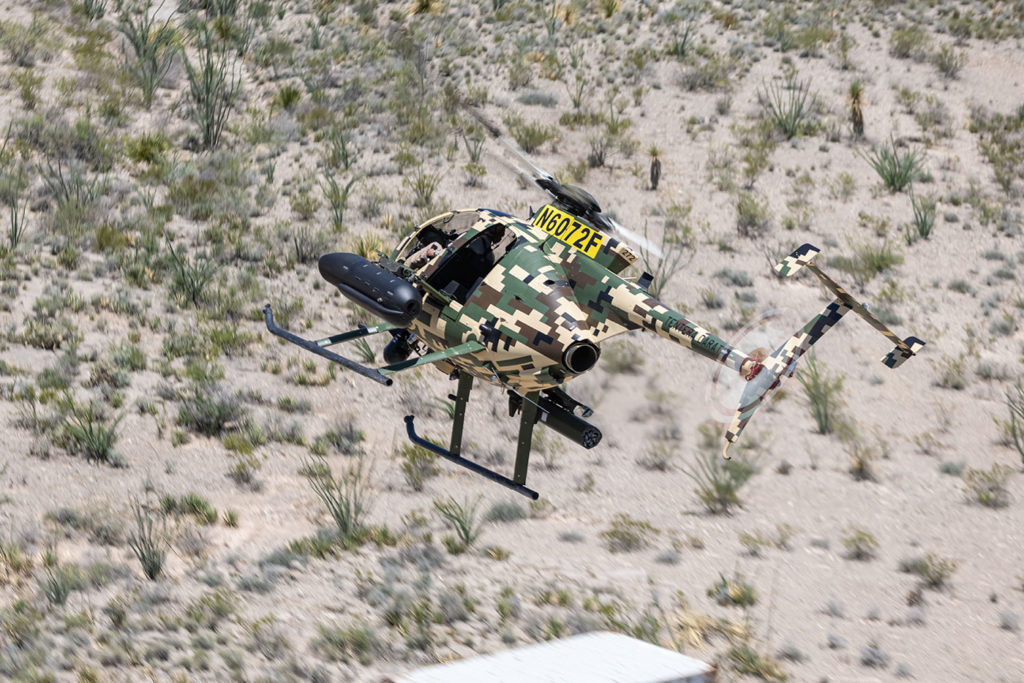
Pilot training consists of aircraft qualification, including touchdown emergency procedure training, basic combat skills, and tactics conducted during daylight and nighttime with night vision goggles (NVGs). Additional training is conducted for the instructor and maintenance test pilots, while supplemental quality control classes allow the customer to become more familiar with both flying and maintaining the aircraft.
For most of the pilots, what they learn in Texas with the MD instructors is transition training specific to the helicopter their militaries have purchased. For instance, the Lebanese soldiers were already proficient at flying the Aerospatiale Gazelle and Bell Huey II. The country bought six MD 530s and created a specific unit around the new aircraft, Banks said. The Kenyan pilots needed somewhat less familiarization with MD because they already were flying the MD 530C and D-models, according to May.
As for the Malaysians, the pilots were all qualified on the Leonardo AW109 and needed to hone their skills flying the somewhat smaller, more agile 530G.

“They’re used to twin engines. They have a twin-engine mindset, so this is getting them into the single-engine mindset,” Banks explained. “They’re all qualified; this is more aircraft transition, if you will.”
On the first day of training, the pilots will learn attack patterns alone with a single instructor. On the second day, they begin training with two aircraft attacking in formation and the mission complexity escalates as necessary for each country’s needs.
Tactical training can include single-ship and team tactics and culminates with day/NVG aerial gunnery utilizing the customer’s pilots, maintainers and armament personnel.

“This is a culminating event where the crew chiefs are learning how to load the aircraft up with the armament guys. The armament guys are kind of running the training,” Banks explained. At the completion of the training, all members of the unit have practice in operating the aircraft as they would in combat — and are ready to hit the ground running when they return to their home country.





